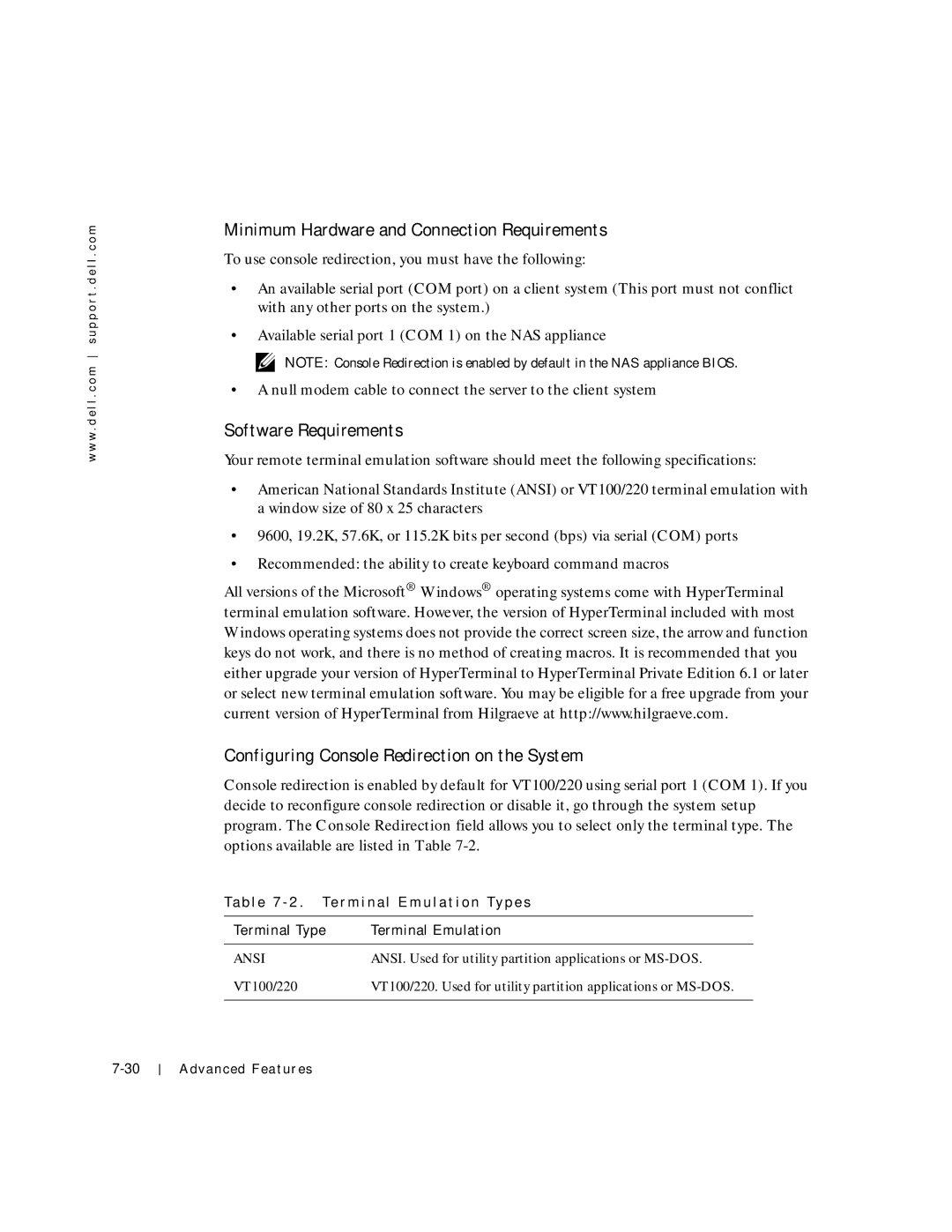
w w w . d e l l . c o m s u p p o r t . d e l l . c o m
Minimum Hardware and Connection Requirements
To use console redirection, you must have the following:
•An available serial port (COM port) on a client system (This port must not conflict with any other ports on the system.)
•Available serial port 1 (COM 1) on the NAS appliance
NOTE: Console Redirection is enabled by default in the NAS appliance BIOS.
•A null modem cable to connect the server to the client system
Software Requirements
Your remote terminal emulation software should meet the following specifications:
•American National Standards Institute (ANSI) or VT100/220 terminal emulation with a window size of 80 x 25 characters
•9600, 19.2K, 57.6K, or 115.2K bits per second (bps) via serial (COM) ports
•Recommended: the ability to create keyboard command macros
All versions of the Microsoft® Windows® operating systems come with HyperTerminal terminal emulation software. However, the version of HyperTerminal included with most Windows operating systems does not provide the correct screen size, the arrow and function keys do not work, and there is no method of creating macros. It is recommended that you either upgrade your version of HyperTerminal to HyperTerminal Private Edition 6.1 or later or select new terminal emulation software. You may be eligible for a free upgrade from your current version of HyperTerminal from Hilgraeve at http://www.hilgraeve.com.
Configuring Console Redirection on the System
Console redirection is enabled by default for VT100/220 using serial port 1 (COM 1). If you decide to reconfigure console redirection or disable it, go through the system setup program. The Console Redirection field allows you to select only the terminal type. The options available are listed in Table
Ta b l e 7 - 2 . Te r m i n a l E m u l a t i o n Ty p e s
Terminal Type | Terminal Emulation |
|
|
ANSI | ANSI. Used for utility partition applications or |
VT100/220 | VT100/220. Used for utility partition applications or |
|
|
